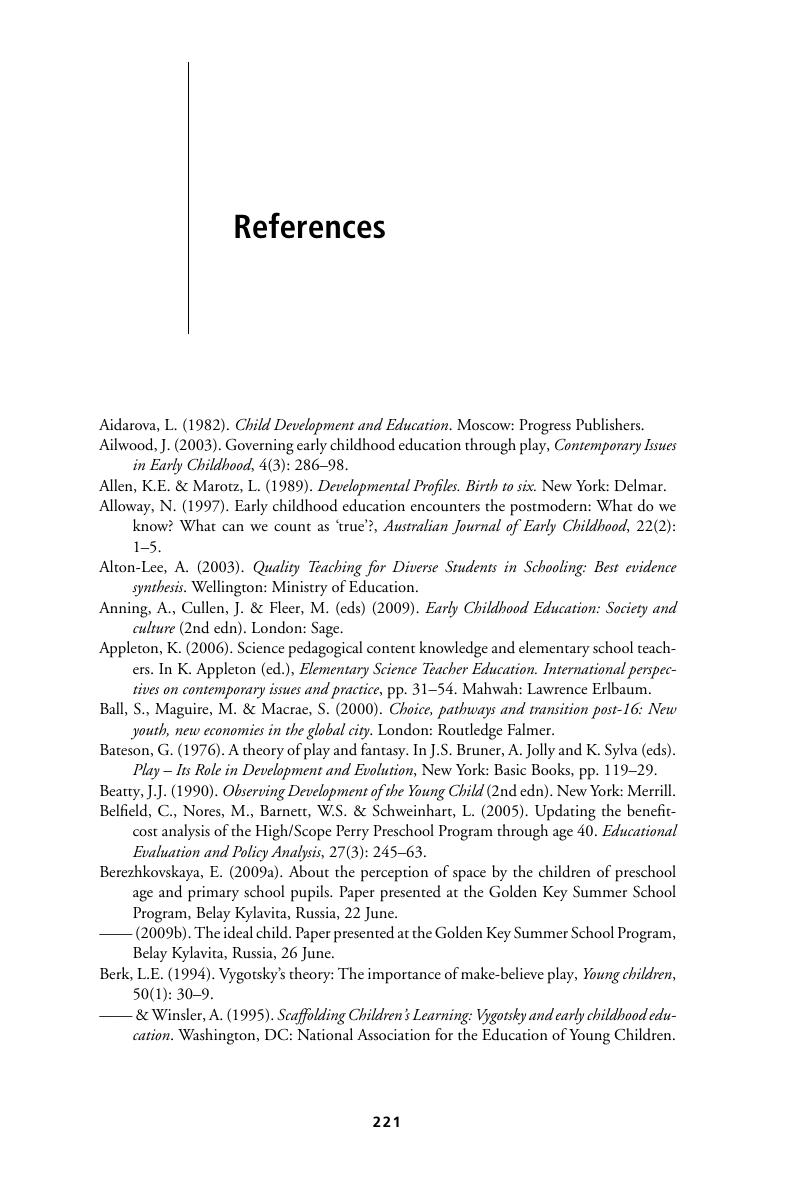References
Published online by Cambridge University Press: 05 October 2013
Summary

- Type
- Chapter
- Information
- Early Learning and DevelopmentCultural-historical Concepts in Play, pp. 221 - 236Publisher: Cambridge University PressPrint publication year: 2010



